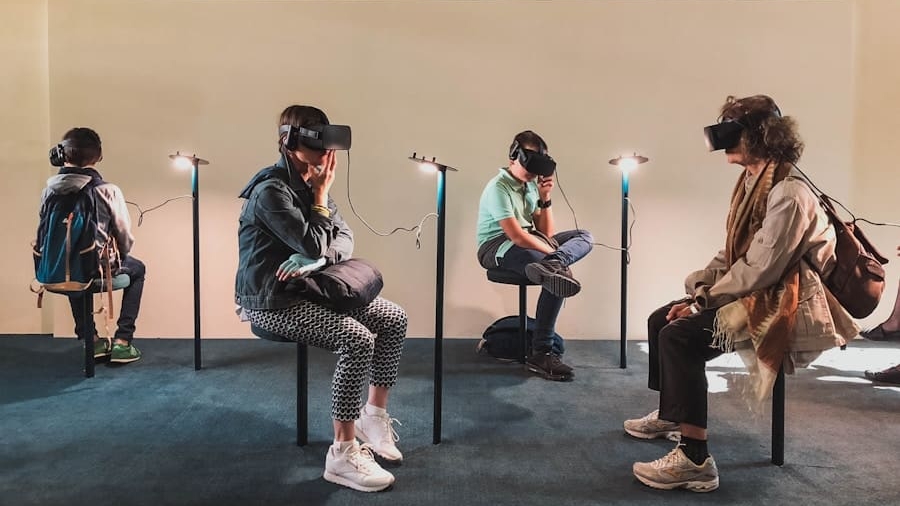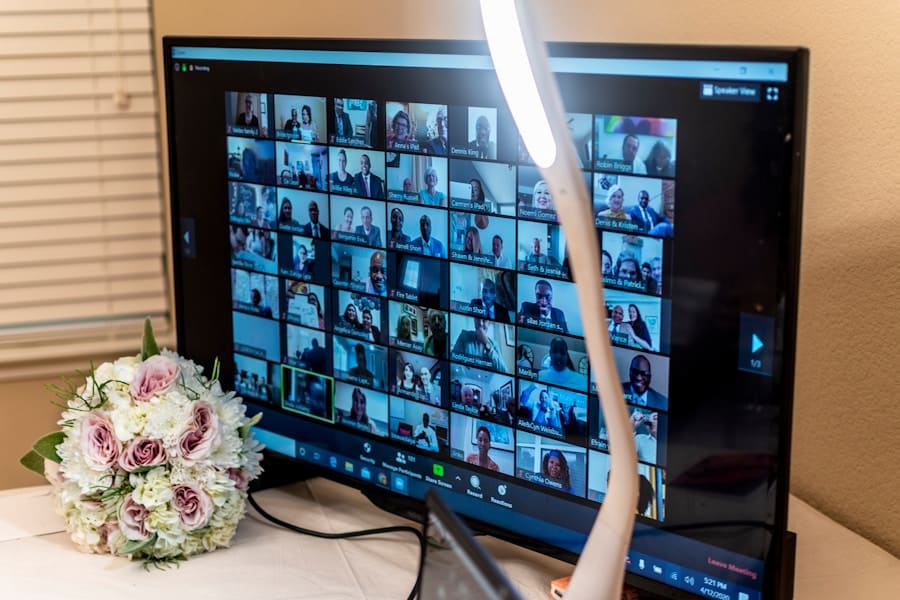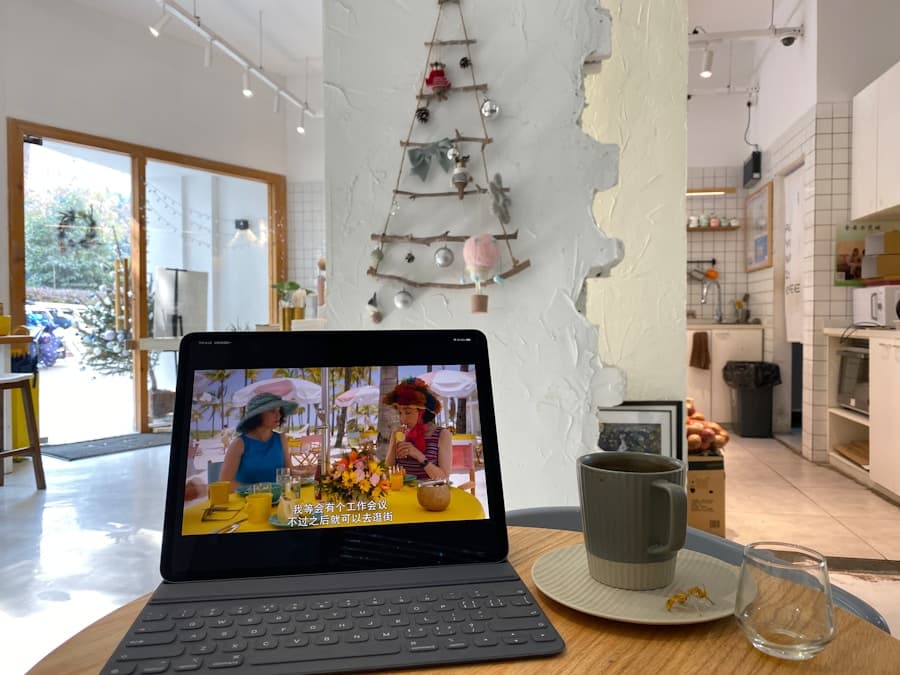Mixed Reality (MR) represents a transformative intersection of the physical and digital worlds, where real and virtual elements coexist and interact in real-time. This technology has evolved significantly over the past few years, driven by advancements in hardware, software, and user interface design. Unlike Virtual Reality (VR), which immerses users in a completely digital environment, or Augmented Reality (AR), which overlays digital information onto the real world, MR allows for a more seamless integration of both realms.
Users can manipulate digital objects as if they were part of their physical surroundings, creating a more engaging and interactive experience. The rise of mixed reality has been particularly impactful in the context of remote work and collaboration. As organizations increasingly adopt flexible work arrangements, the need for effective communication and collaboration tools has never been more critical.
MR technology offers innovative solutions that can bridge the gap between remote team members, fostering a sense of presence and engagement that traditional communication methods often lack. By leveraging MR, teams can collaborate on projects in real-time, regardless of their physical locations, thus redefining the dynamics of teamwork in a digital age.
Key Takeaways
- Mixed reality combines elements of virtual and augmented reality to create immersive experiences
- Remote team collaboration benefits from mixed reality through enhanced communication and productivity
- Mixed reality technology integrates digital and physical worlds, allowing for interactive and collaborative experiences
- Mixed reality enhances communication by enabling remote teams to interact in a more natural and immersive way
- Mixed reality has a positive impact on remote team productivity by improving engagement and efficiency
The Benefits of Remote Team Collaboration
Flexibility and Work-Life Balance
One of the most significant benefits of remote team collaboration is the flexibility it provides. Team members can work from various locations, allowing them to choose environments that best suit their personal and professional needs. This flexibility often leads to improved work-life balance, as employees can manage their schedules more effectively without the constraints of a traditional office setting.
Access to Global Talent
Remote collaboration enables organizations to tap into a global talent pool. Companies are no longer limited to hiring individuals within a specific geographic area; they can recruit the best talent from around the world. This diversity not only enriches team dynamics but also fosters innovation, as individuals from different backgrounds bring unique perspectives and ideas to the table.
Cost Savings and Innovation
Additionally, remote collaboration can lead to cost savings for organizations, as they can reduce overhead expenses associated with maintaining physical office spaces.
Understanding Mixed Reality Technology
Mixed Reality technology encompasses a range of tools and platforms that facilitate the blending of physical and digital environments. At its core, MR relies on advanced hardware such as headsets, sensors, and cameras that track user movements and interactions. These devices create immersive experiences by projecting digital content into the user’s real-world environment.
For instance, Microsoft’s HoloLens is a prominent example of MR technology that allows users to visualize 3D holograms while still being aware of their physical surroundings. The software aspect of MR is equally crucial, as it enables developers to create applications that leverage this technology effectively. These applications can range from collaborative design tools to training simulations that enhance learning experiences.
The development of MR software often involves complex algorithms that ensure accurate tracking and interaction with digital objects. As MR technology continues to evolve, we can expect more sophisticated applications that will further enhance its utility in various sectors, including education, healthcare, and engineering.
How Mixed Reality Enhances Communication
Effective communication is vital for any team, especially in remote settings where non-verbal cues may be lost. Mixed Reality enhances communication by providing immersive experiences that allow team members to interact with digital content in a shared space. For example, using MR tools, team members can visualize complex data sets or 3D models together, facilitating discussions that are more engaging than traditional video calls or screen sharing.
This shared experience fosters a sense of presence and collaboration that can significantly improve understanding and retention of information. Furthermore, MR technology allows for real-time feedback and interaction. Team members can manipulate digital objects during discussions, making it easier to convey ideas and concepts visually.
This dynamic form of communication not only enhances clarity but also encourages creativity and innovation. For instance, architects can collaborate on building designs by overlaying digital blueprints onto physical spaces, allowing for immediate adjustments based on team input. Such interactive communication methods can lead to more productive meetings and a stronger sense of teamwork.
The Impact of Mixed Reality on Remote Team Productivity
The integration of Mixed Reality into remote team collaboration has shown promising results in enhancing productivity levels. By providing tools that facilitate real-time collaboration and interaction with digital content, MR helps teams streamline their workflows. For instance, engineers working on product designs can use MR to visualize prototypes in their actual environments, allowing for quicker iterations and decision-making processes.
This capability reduces the time spent on back-and-forth communications and accelerates project timelines. Moreover, MR can significantly reduce the cognitive load on team members by providing intuitive interfaces for complex tasks. When team members can visualize data or processes in an interactive manner, they are better equipped to understand intricate details without becoming overwhelmed.
This clarity leads to more informed decision-making and minimizes errors that may arise from miscommunication or misunderstanding. As a result, teams utilizing MR technology often experience higher levels of efficiency and output.
Overcoming Challenges with Mixed Reality in Remote Team Collaboration
Despite its numerous advantages, implementing Mixed Reality in remote team collaboration is not without challenges. One significant hurdle is the initial investment required for MR hardware and software development. Organizations may be hesitant to allocate resources toward new technologies without clear evidence of return on investment.
Additionally, the learning curve associated with adopting MR tools can be steep for some team members, particularly those who may not be tech-savvy. Another challenge lies in ensuring compatibility across different devices and platforms. As MR technology continues to evolve rapidly, maintaining interoperability between various systems can be complex.
Teams may encounter difficulties when trying to collaborate using different MR devices or software versions, leading to frustration and inefficiencies. To address these challenges, organizations must prioritize training and support for their teams while also investing in scalable solutions that can adapt to future technological advancements.
Best Practices for Implementing Mixed Reality in Remote Team Collaboration
To maximize the benefits of Mixed Reality in remote team collaboration, organizations should adopt several best practices during implementation. First and foremost, it is essential to provide comprehensive training for all team members on how to use MR tools effectively. This training should cover not only the technical aspects but also best practices for collaboration within an MR environment.
By ensuring that everyone is comfortable with the technology, teams can fully leverage its capabilities. Additionally, organizations should start with pilot projects before rolling out MR solutions across the entire team or organization. These pilot projects allow teams to experiment with different applications and workflows while identifying potential challenges early on.
Gathering feedback from participants during these trials can provide valuable insights into how MR can be tailored to meet specific team needs. Furthermore, fostering a culture of experimentation encourages team members to explore innovative ways to integrate MR into their daily workflows.
Future Outlook for Mixed Reality in Remote Team Collaboration
The future of Mixed Reality in remote team collaboration appears promising as technology continues to advance at an unprecedented pace. As hardware becomes more affordable and accessible, we can expect wider adoption across various industries. The development of lighter, more comfortable headsets will likely enhance user experience, making it easier for teams to engage with MR tools for extended periods without discomfort.
Moreover, advancements in artificial intelligence (AI) will play a crucial role in shaping the future of MR collaboration. AI-driven analytics could provide insights into team dynamics and productivity patterns within MR environments, enabling organizations to optimize their workflows further. As these technologies converge, we may witness entirely new forms of collaboration that transcend current limitations, allowing teams to work together seamlessly regardless of their physical locations.
In conclusion, Mixed Reality holds immense potential for transforming remote team collaboration by enhancing communication, productivity, and engagement among team members. As organizations continue to navigate the complexities of remote work, embracing MR technology will be essential for fostering innovation and maintaining competitive advantage in an increasingly digital landscape.
A related article to How Mixed Reality Improves Remote Team Collaboration is the one discussing the best software for furniture design. This article provides valuable insights into the tools that can enhance the design process for remote teams working on furniture projects. To learn more about the software options available for furniture design, check out this article.
FAQs
What is mixed reality?
Mixed reality is a technology that combines elements of both virtual reality (VR) and augmented reality (AR) to create an interactive and immersive environment where physical and digital objects coexist and interact in real time.
How does mixed reality improve remote team collaboration?
Mixed reality improves remote team collaboration by providing a more immersive and interactive experience for team members, allowing them to feel as if they are in the same physical space even when they are geographically dispersed. This technology enables team members to share and interact with 3D models, holograms, and virtual objects in real time, making collaboration more engaging and effective.
What are some specific benefits of using mixed reality for remote team collaboration?
Some specific benefits of using mixed reality for remote team collaboration include improved communication and understanding through the use of 3D models and holograms, enhanced productivity and efficiency through real-time collaboration on virtual objects, and a more engaging and interactive experience for team members compared to traditional video conferencing or messaging platforms.
What are some examples of mixed reality tools that can be used for remote team collaboration?
Examples of mixed reality tools that can be used for remote team collaboration include Microsoft HoloLens, Magic Leap, and various software applications that support mixed reality experiences, such as Spatial and MURAL.
Are there any challenges or limitations to using mixed reality for remote team collaboration?
Some challenges and limitations of using mixed reality for remote team collaboration include the cost of acquiring and maintaining the necessary hardware and software, the need for training and technical support for team members who are not familiar with mixed reality technology, and potential issues related to connectivity and compatibility with existing collaboration tools and platforms.



